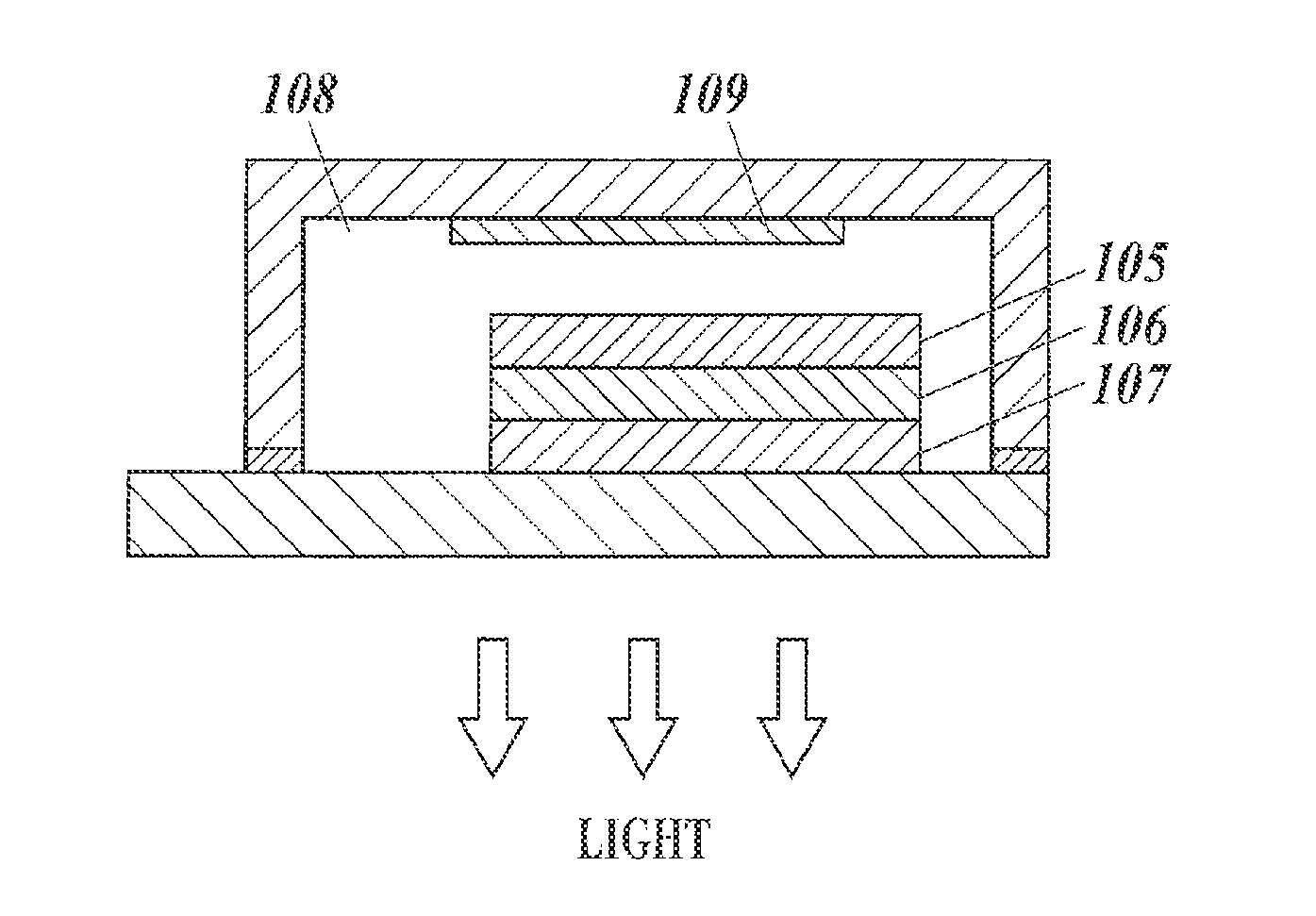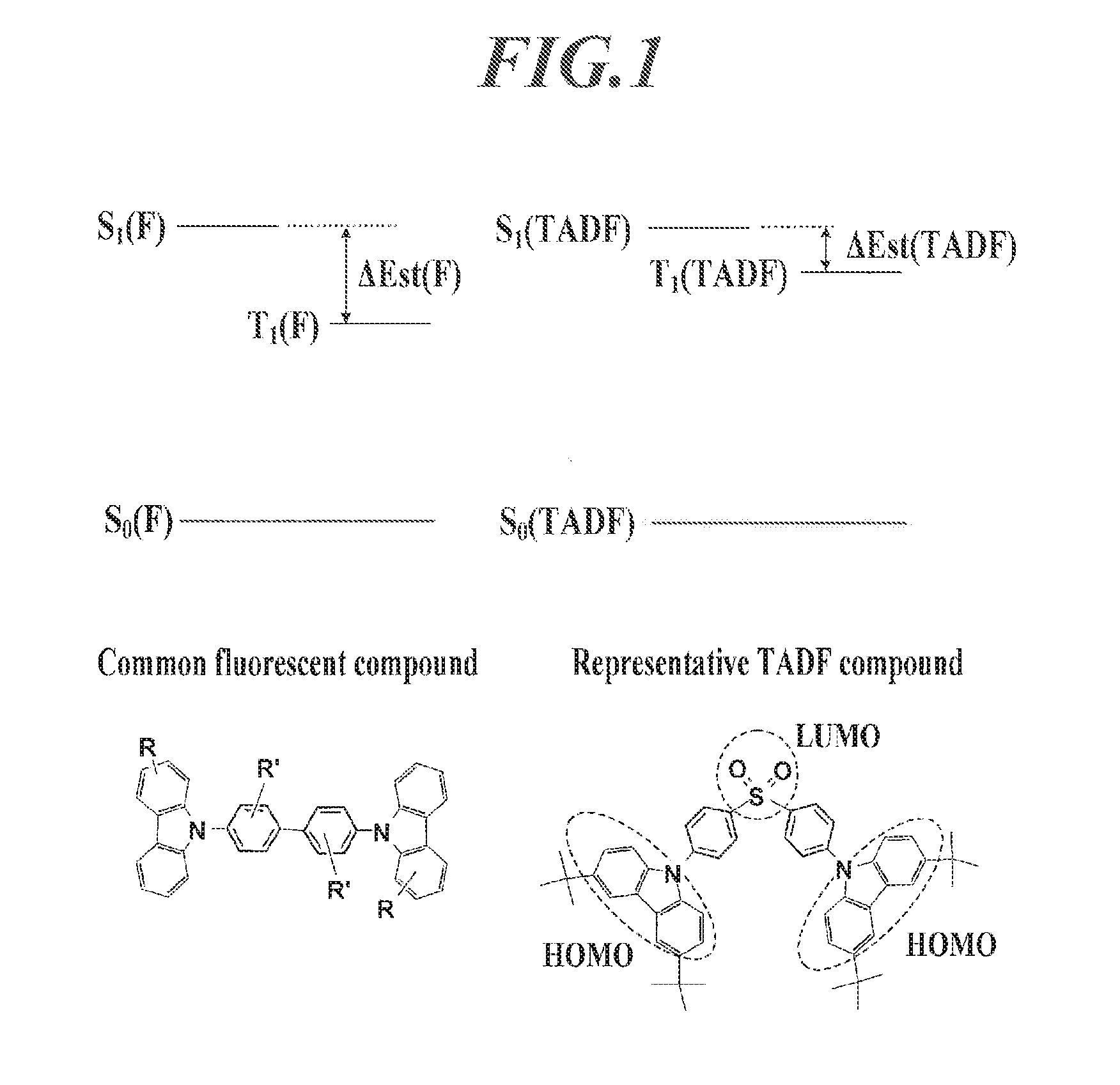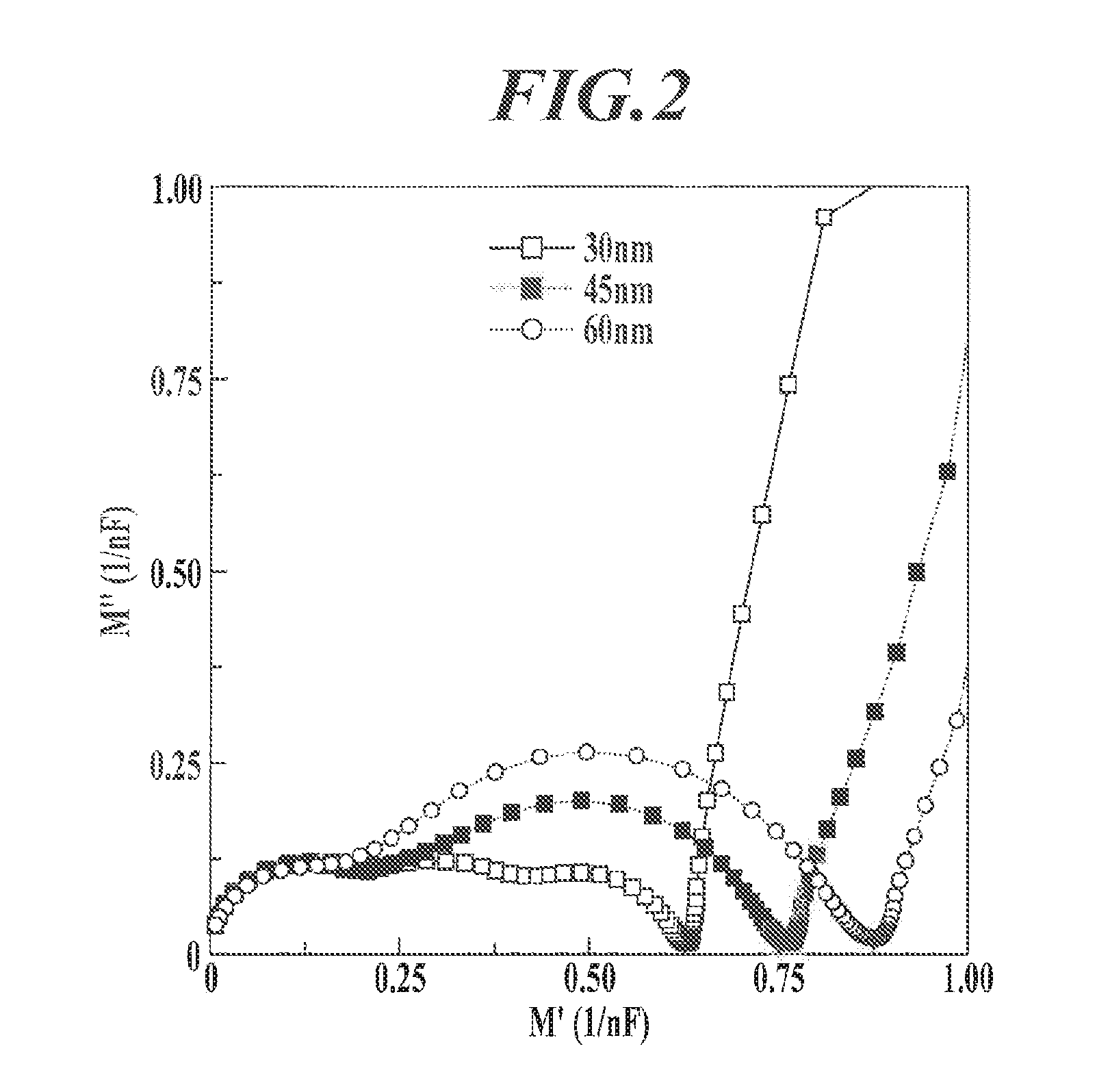Organic electroluminescent element, electronic device, light emitting device, and light emitting material
a technology of electroluminescent elements and light emitting materials, applied in the direction of luminescent compositions, organic chemistry, chemistry apparatus and processes, etc., can solve the problems of reducing the amount of rare metal deposits or the cost of rare metal deposits in the future, the emission efficiency of tta is not as high as that of the aforementioned phosphorescent materials, etc., to achieve high emission efficiency, long life, and high emission efficiency
- Summary
- Abstract
- Description
- Claims
- Application Information
AI Technical Summary
Benefits of technology
Problems solved by technology
Method used
Image
Examples
examples
[0382]Hereafter, the present invention will be described specifically by referring to Examples, however, the present invention is not limited to them. In Examples, the term “parts” or “%” is used. Unless particularly mentioned, it represents “mass parts” or “mass %”.
[0383]In addition, a volume % of a compound in each example is obtained from a specific gravity by measuring a produced layer thickness with a quartz oscillator microbalance method and by calculating a mass.
>
[0384]An anode was prepared by making patterning to a glass substrate of 100 mm×100 mm×1.1 mm (NA45, produced by NH Techno Glass Corp.) on which ITO (indium tin oxide) was formed with a thickness of 100 nm. Thereafter, the above transparent support substrate provided with the ITO transparent electrode was subjected to ultrasonic washing with isopropyl alcohol, followed by drying with desiccated nitrogen gas, and was subjected to UV ozone washing for 5 minutes.
[0385]On the transparent support substrate thus prepared w...
PUM
| Property | Measurement | Unit |
|---|---|---|
| internal quantum efficiency | aaaaa | aaaaa |
| internal quantum efficiency | aaaaa | aaaaa |
| phosphorescence quantum efficiency | aaaaa | aaaaa |
Abstract
Description
Claims
Application Information
 Login to View More
Login to View More - R&D
- Intellectual Property
- Life Sciences
- Materials
- Tech Scout
- Unparalleled Data Quality
- Higher Quality Content
- 60% Fewer Hallucinations
Browse by: Latest US Patents, China's latest patents, Technical Efficacy Thesaurus, Application Domain, Technology Topic, Popular Technical Reports.
© 2025 PatSnap. All rights reserved.Legal|Privacy policy|Modern Slavery Act Transparency Statement|Sitemap|About US| Contact US: help@patsnap.com



